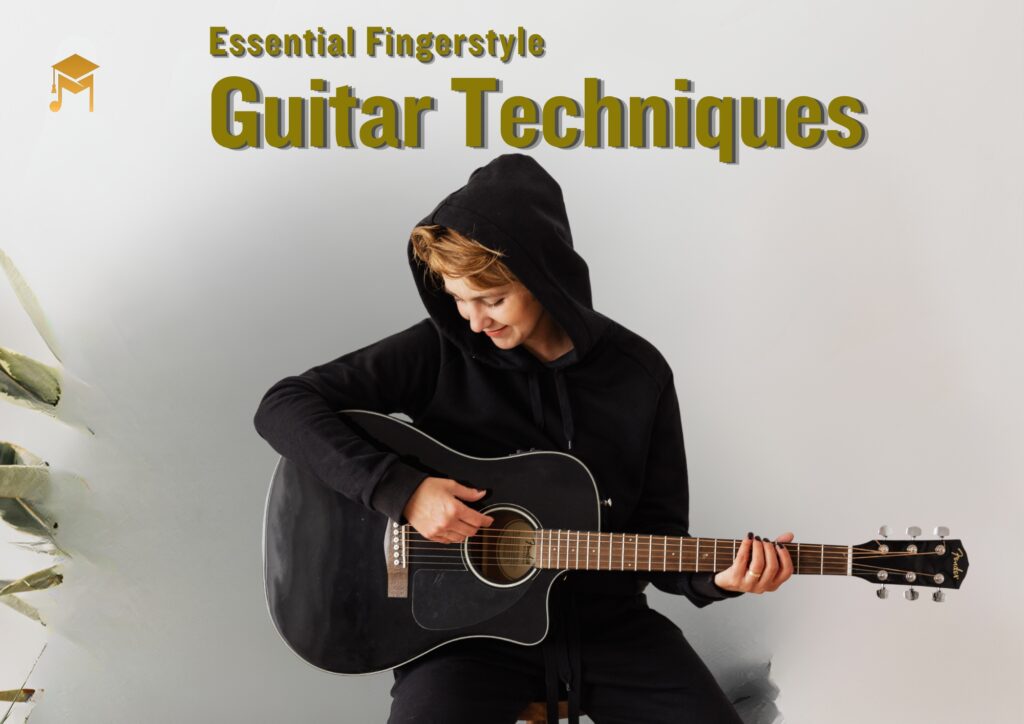The Ultimate Guide to Essential Fingerstyle Guitar Techniques
Fingerstyle guitar playing offers a unique approach to music that emphasizes expressiveness and individuality. Unlike traditional strumming with a pick, fingerstyle allows players to pluck strings using their fingers, creating intricate melodies and harmonies. In this blog, we’ll explore essential fingerstyle techniques to help you enhance your skills and develop your own playing style.
What is Fingerstyle Playing?
Fingerstyle involves using your fingers—typically the thumb, index, middle, and ring fingers—to pluck the strings of the guitar instead of relying on a pick. This technique allows for greater expressiveness, enabling you to produce a wide range of sounds and dynamics. Fingerstyle playing is often used in various genres, from folk and classical to blues and jazz, making it a versatile skill for any guitarist.
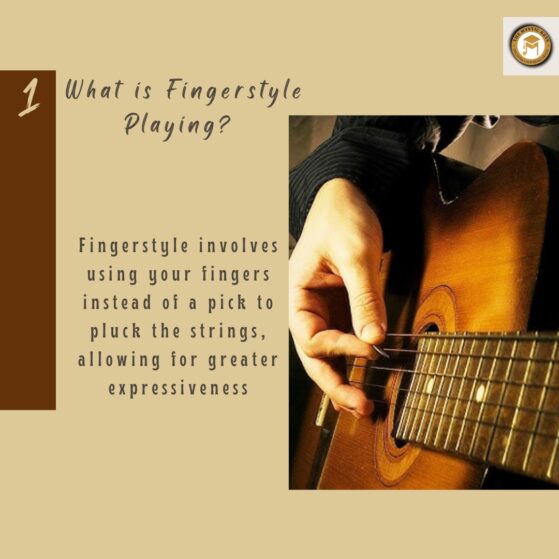
Start with Basic Patterns
To master fingerstyle, begin by practicing simple fingerpicking patterns. These basic patterns help develop coordination between your fingers, allowing them to work together seamlessly. Start with patterns like alternating bass lines, where your thumb plays the bass notes, while your fingers pluck the higher strings. Gradually increase the complexity of these patterns as you gain confidence and dexterity.
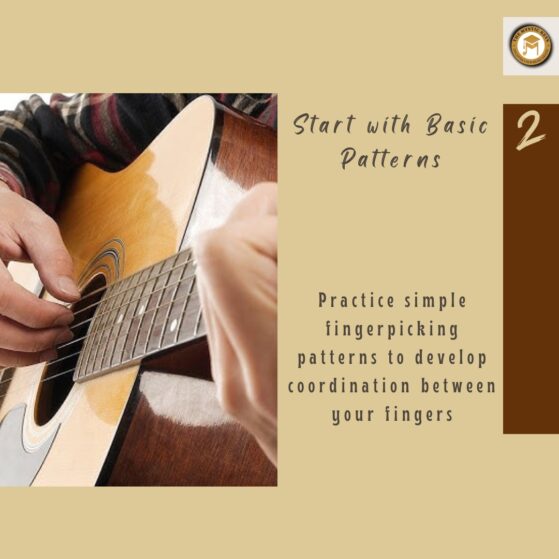
Use Your Thumb for Bass Notes
One of the fundamental aspects of fingerstyle playing is utilizing your thumb for bass notes. This technique provides a strong foundation for your music, allowing you to create a rich, full sound. While your thumb handles the bass, let your other fingers focus on playing melody and harmony. This division of labor enhances the overall texture of your music and gives it a more layered feel.
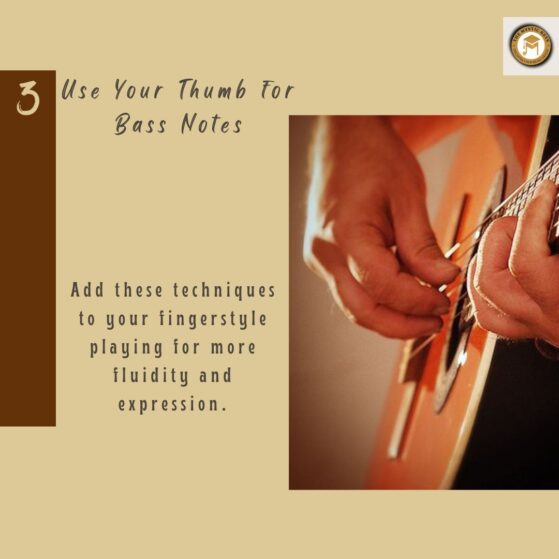
Experiment with Nail Length
The length of your nails can significantly affect the tone and attack of your fingerstyle playing. Some players prefer shorter nails for a softer, warmer sound, while others opt for longer nails to achieve a brighter, more pronounced tone. Experiment with different nail lengths and shapes to discover what works best for your playing style. Consider using fingerpicks if you want to enhance your attack without altering your natural nails.

Incorporate Hammer-Ons and Pull-Offs
Adding hammer-ons and pull-offs to your fingerstyle repertoire can bring more fluidity and expression to your playing. A hammer-on involves pressing down on a string without picking it, creating a smooth transition between notes. Conversely, a pull-off allows you to release a note while simultaneously sounding another, resulting in a seamless flow of sound. Integrating these techniques into your playing will help you create more dynamic and expressive melodies.
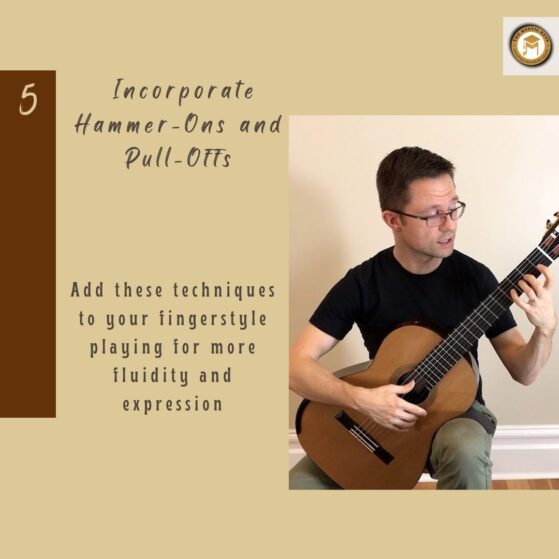
Try Alternate Finger Patterns
Once you’ve grasped basic fingerpicking patterns, challenge yourself by exploring alternate finger patterns. This experimentation can add variety to your playing style and keep your practice sessions engaging. Try mixing up the order in which you pluck the strings, or introduce new patterns to your songs. This not only enhances your fingerstyle skills but also encourages creativity in your music-making process.
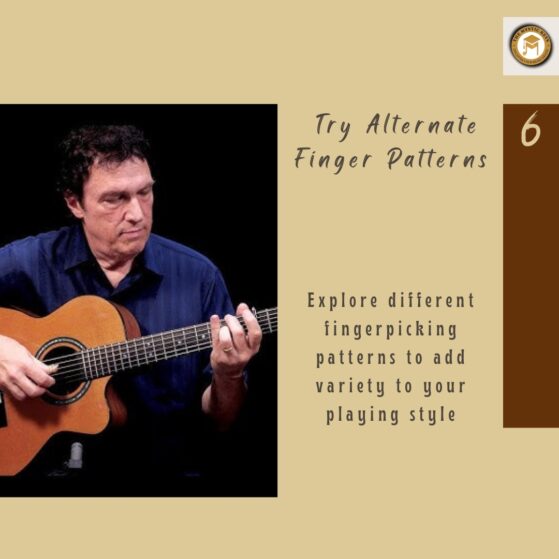
Practice with a Metronome
As you work on improving your fingerstyle technique, practicing with a metronome is essential. A metronome helps you maintain a steady tempo, which is crucial for developing rhythmic accuracy. Start slow, ensuring that each note is clear and precise, then gradually increase the tempo as you become more comfortable. Consistent practice with a metronome will help you build confidence and improve your overall fingerstyle playing.

Listen to Fingerstyle Guitarists
To truly excel in fingerstyle guitar, immerse yourself in the music of renowned fingerstyle guitarists. Study their techniques, fingerpicking patterns, and unique styles for inspiration. Artists like Tommy Emmanuel, Andy McKee, and Sungha Jung are excellent resources for learning new patterns and understanding the nuances of fingerstyle playing. Analyzing their performances can provide valuable insights into how to incorporate various techniques into your own playing.

Conclusion
Mastering fingerstyle techniques requires patience, practice, and creativity. By focusing on these essential techniques, you’ll develop a unique fingerstyle approach that enhances your musical expression. Remember to experiment, listen to others, and enjoy the journey of becoming a skilled fingerstyle guitarist. Plus, if you want to further your guitar skills, master electric guitar from basic to advanced with our Guitar Lessons Online. Happy playing!


